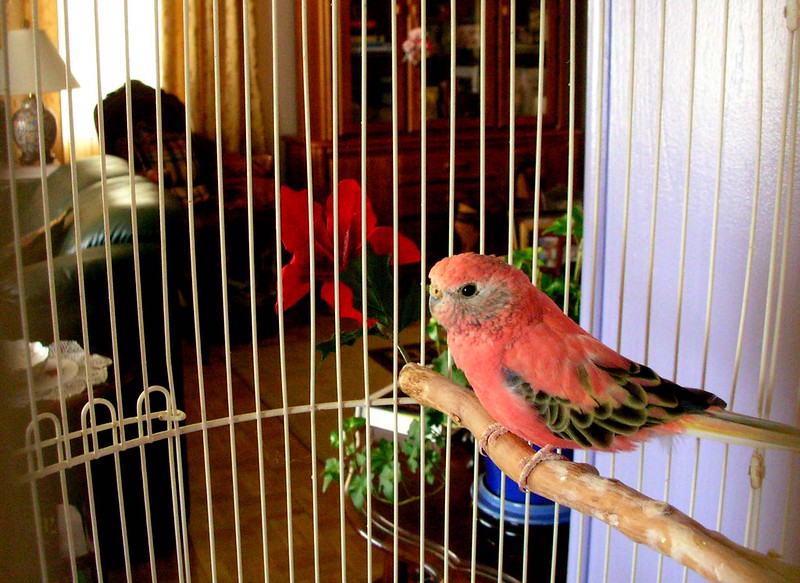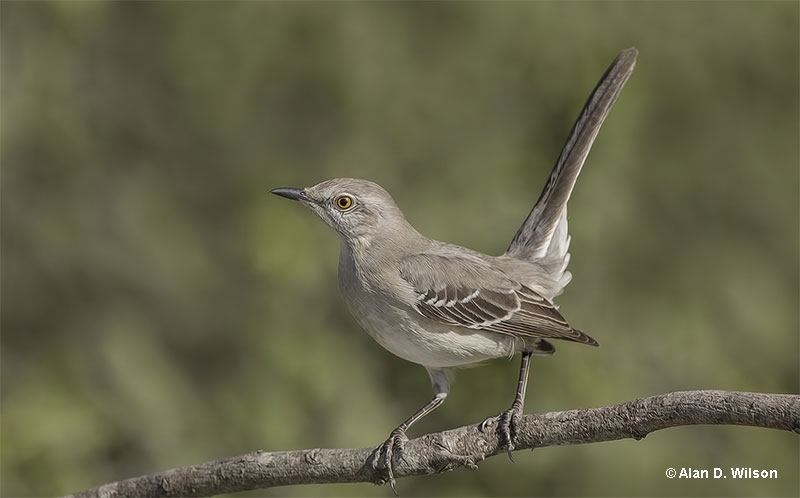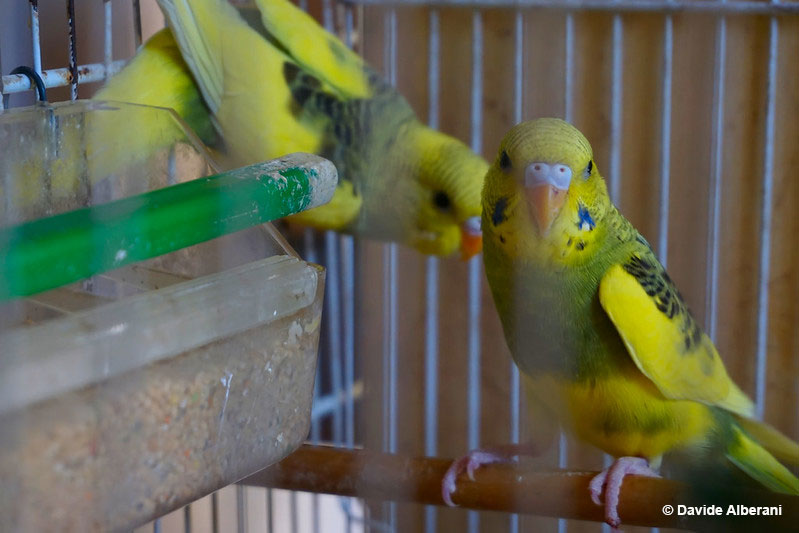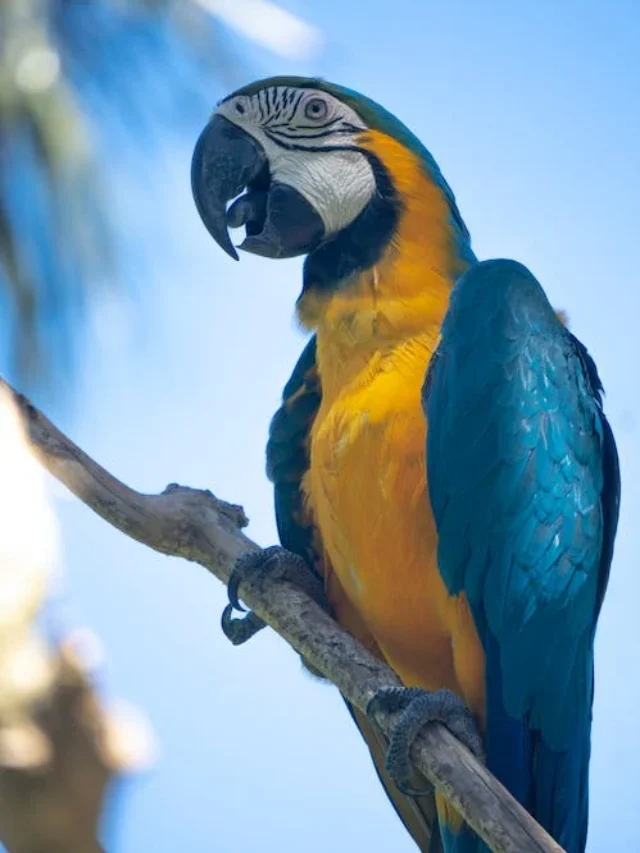
Language is the primary tool of communication for humans. Therefore, it is no wonder that birds that can imitate human speech have long captivated our attention and imagination.
From parrots and mynah birds to ravens and mockingbirds, these avian mimics have fascinated and entertained humans for millennia, and there are complex physiological and evolutionary mechanisms behind their showcased talent.
“Polly wants a cookie?” This article explores the intriguing phenomenon of bird mimics, exploring the species that exhibit this ability, the underlying mechanisms behind their vocal skills, and why they engage in this peculiar behavior.
On this page
Do All Birds Talk?
To answer the question of all birds talking, we must define what we mean by “talking.”
All birds communicate with voices. Their vocal abilities are reflected in their complex songs, calls, and vocal mimicry. The “talent” evolved because birds need to “talk” to each other at a distance.
Some birds can mimic the calls and songs of other bird species and different sounds from their environment – including human speech. However, not all birds can do this.
Here, we are interested in particular birds that can mimic our speech – “talk” in a way we mean it.
The ability to use human speech is actually limited to a few avian groups. These include:
- Parrots (e.g., Budgerigar, African Grey, Amazon Parrot, Cockatoo, Eclectus)
- Corvids (e.g., Ravens)
- Mynahs (e.g., Common Mynah)
- Starlings (e.g., European Starling)
- Mockingbirds
It is worth noting that the vocal superpowers of the listed birds don’t end with human speech – they’re excellent mimics in general.
The Power of Mimicry
Vocal mimicry in birds is a learning process, occurring through constant imitation and then practice.
Early in their lives, young birds learn to mimic sounds by listening and imitating the vocalizations of their parents and other adult birds in their social group and their environment. Through repetition and refinement, they gradually develop the ability to reproduce a wide range of sounds.

© Alan D. Wilson
Above all, vocal mimicry occurs because birds are very social animals, and the learned imitation can help birds in a group setting in various ways.
Some species are thought to imitate others to call for help in the case of a predator attack. Others use it as a part of their mating strategies – to use the “exotic” calls to impress females or ward off competition. For brood parasitic birds, mimicking their host species’ calls helps the chicks not get recognized as intruders.
Interestingly, sometimes birds learn the “wrong” calls by mistake; however, males that are “bad learners” are usually not successful in mating, so they don’t get to pass the awry imitation down to new generations.
Surprisingly, it’s even possible to teach a crow to talk!
Why Mimic Humans?
The tendency of some birds to mimic human speech stems from our presence in their lives.
All birds that imitate human speech are highly social and intelligent. For captive birds capable of replicating our communication, mimicry is most likely due to their need for socialization and bonding.
However, even wild parrots regularly encountering humans learn to use human words. For example, some cockatoo populations in Australia have acquired the local vocabulary, with the phrase “Hello cockie” and swearwords being the most common.
Related: How long do parrots live?
It is most likely that the wild birds primarily picked these up from escaped pet parrots who joined their flocks, but that the interaction with humans in parks also perpetuates the skill.
The Physiology of Vocal Mimicry
We know that bird songs can be very complex. Moreover, human speech and some artificial sounds imitated by birds require a wide range of sounds. How do birds manage to create them?
The secret lies in the specialized vocal apparatus – the syrinx- completely unique in the animal kingdom, and responsible for the advanced sound production and manipulation.
We find the syrinx at the base of the avian trachea. The muscles modulate the sound by altering the strain of the membranes and the bronchial openings. This “bird voice box” acts as a musical instrument that enables birds to make so many sounds.

© Davide Alberani
Is It Possible to Teach a Bird to Talk?
With patience, consistent training, and positive reinforcement, pet bird owners and trainers can successfully teach their parrots to reproduce words, phrases, and even sentences – proven that the individual bird is capable of it.
It is important to note that not all individuals can successfully imitate human speech, even if they are the “right” species. Instead, the birds exhibiting a high vocal mimicry talent are exceptional. Each bird has its own personality and learning capacity; it’s essential to be patient and understanding throughout the training process.
In the end, talking or not talking shouldn’t be the measure of your pet’s worthiness. Remember that this expectation is not very natural for the bird in the first place.
Tips On Learning Your Bird to Talk
The process of teaching a bird to talk involves several steps.
- Get to know your bird and create a friendly atmosphere. It is crucial to spend a lot of time with your pet in a safe, stress-free space. This creates an environment that encourages vocalization and social interaction.
- Talk to the bird frequently. Use clear and repetitive words or phrases. Examples of suitable, classic starter words include “hello,” “bye-bye,” “nite-nite,” or the bird’s name.
- Rewards. Positive reinforcement – offering treats, praise, or attention when the bird produces desired sounds or words – encourages them to “talk.”
- Play on repeat. Repetition and reinforcement play a crucial role. Consistently repeating specific words or phrases in the bird’s presence helps them connect the activity with positive events, whether it’s a treat or your affection.
- Don’t give up easily. Some birds can take months or years to start to mimic – consistency is the key. Setting up a daily routine of practice is very helpful in this respect. Succesfull or not, your birdie will surely love the additional attention.
Also, know that teaching a bird to talk – repeat words – is not the same as teaching them language, a true linguistic comprehension. While birds may mimic words and phrases, they are mostly limited in understanding the meaning behind those words.
Talking Birds – Frequently Asked Questions
What bird is most likely to talk?
Parrots such as African grey parrots, Amazon parrots, cockatoos, budgerigars, starling family members such as mynahs and European starlings, and corvids like ravens have all shown varying levels of “proficiency in human.” However, the talking abilities of parrots are the most superior.
The best talkers in the bird world are the African grey parrots. These birds are proven not only to obtain a great vocabulary but actually use language with understanding. Sadly, their talent has greatly cost this species – now listed as Endangered. Due to the constant demands of the pet trade, more than 20% of the wild population is captured and sold annually, with more than half of the birds dying in the process.
Although African greys may be the brightest talkers, they may not be the most talented. A common pet budgerigar called Puck, owned by Camille Jordan of Petaluma, California, knew about 1728 words in his lifetime, earning him the title of the bird with the largest vocabulary.
Do parrots understand words?
We definitely know that parrots can mimic and memorize the words and names of objects. However, to truly understand language, parrots would have to be able to create their own phrases and sentences.
Well, guess what? Alex the African Grey Parrot could do just that. In her groundbreaking work, the renowned animal behaviorist and psychologist Irene Pepperberg worked with Alex and her subsequent African greys to test if they could truly comprehend what they were saying.
By using positive behavioral training, Pepperberg proved that parrots (or at least some of them) could learn to associate a sound with meaning.
Alex could count up to six, identify objects by shape and color, and separate groups of things based on shape, color, and material. He used English to communicate with other African grays in Pepperberg’s lab. He even encouraged and scolded their labeling and categorization efforts!
Do parrots have high IQ?
We’ve always known parrots as smart birds, but we weren’t aware of how much until recently.
The pivotal research by Dr. Pepperberg and other scientists on African greys revealed that these birds exhibit deductive reasoning – for example, by correctly selecting boxes containing food versus empty ones when shaken or using cooperative behavior to obtain food rewards. Their intelligence is believed to be among the highest in the animal kingdom, comparable to apes and cetaceans, with some researchers claiming they’re equivalent to those of a three- or four-year-old human child.
Not all species of parrots have the same cognitive abilities. At least for now, African greys seem to be more advanced than many of their (also smart) parrot counterparts.
What do parrots think when they talk?
A bird may decide to mimic human speech for more than one reason. For captive birds, mimicking human speech could be a form of social bonding and communication with their human caregivers. Pet birds often learn to imitate human speech to establish a connection with their humans and integrate themselves into our environment.
For parrots, who are highly intelligent and social birds, human vocal mimicry may also be inspired by a desire for attention, interaction, and mental stimulation. By imitating us, parrots try to increase social exchange and, to put it bluntly, make friends with us.

